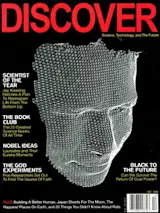Brain scans of a 23-year-old woman who, in a traffic accident, sustained head injuries so severe she met the clinical criteria for a vegetative state are forcing many doctors to reconsider what they know about such patients' awareness.
In the experiment the woman was instructed to imagine playing tennis or walking around her house for 30 seconds when given the cues "tennis" or "house." Her brain activity proved identical to that of healthy subjects, suggesting that she carried out the commands. "We've come up with a method for determining that a patient is aware, where the existing clinical techniques were not able to," says Adrian Owen, a neuroscientist at the Medical Research Council in Cambridge, England, who led the study.
Owen cautions that he tested only one patient and that the results might not hold true for others, especially those with more severe injuries. Nicholas Schiff, a neurologist at Cornell's Weill Medical College, adds that such brain-scan results don't necessarily prove awareness, pointing out that people on the verge of sleep or under hypnosis follow orders without necessarily being aware too. Owen's team plans to address that concern by using the two mental tasks, which reliably activate different brain areas, as a basis of communication, where "yes" is signaled by thinking about playing tennis and "no" by mentally walking through your home. "All the theoretical pieces of the puzzle are in place, and we've done it in healthy volunteers," Owen says. "Whether it could work in a patient, we don't yet know." If it does, it could be used to communicate with the seemingly unconscious.














